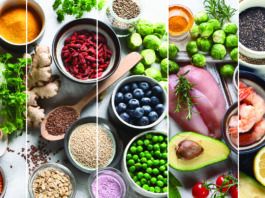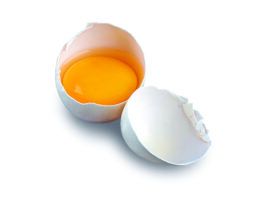Q: We always have a bounty of fresh fruit-more than we can eat before...
Answer :Healthletter recipe consultant Patsy Jamieson replies: To freeze fresh fruit without sugar, peel and pit, if necessary, or rinse and pat dry. Slice or cut fruit into bite-sized pieces. Spread on a tray, cover and freeze until solid. Transfer to a plastic food storage bag, remove air from bag, seal and label. Freeze for up to eight months. To prevent peaches, bananas and mangos from turning brown, coat with lemon juice or an anti-browning…
Q: Everyone is singing the praises of fish oil nowadays, but I read that...
Answer:Alice H. Lichtenstein, DSc, director of the Cardiovascular Nutrition Laboratory at Tufts Jean Mayer Human Nutrition Research Center on Aging, explains that fish is beneficial because its an excellent source of the omega-3 fatty acids EPA and DHA. (For more on the benefits of omega-3s-and why other dietary sources such as walnuts and flaxseeds arent an efficient way to get EPA/DHA-see the July Special Report.) Fish and fish oil raise LDL cholesterol only in some…
Q: I keep reading that adding milk to tea interferes with its antioxidant activity....
Answer:Jeffrey Blumberg, PhD, director of Tufts HNRCA Antioxidants Research Laboratory, replies, I am unaware of any studies that have examined the effect of soy milk on the antioxidant activity of tea. However, the basic premise of this interaction is that the protein (mostly casein) in milk binds to the tea flavonoids, particularly the catechins, and thus inhibits their antioxidant capacity as well as bioavailability. As soy milk also contains substantial protein (albeit not casein), a…
Q: I enjoy Indian food very much and it appears very healthy, with many...
Answer :Ghee-clarified butter, with the milk solids removed-is made by heating unsalted butter to separate the milk solids from the pure butterfat. Although practitioners of Ayurvedic medicine in India claim that ghee has special health properties, some experts argue that the prevalence of ghee in Indian cuisine is actually a contributor to the high rates of heart disease in that country. In any case, Alice H. Lichtenstein, DSc, director of the Cardiovascular Nutrition Laboratory at…
Q: Your Special Report on aspartame and high-fructose corn syrup (September Healthletter) made me...
Answer :In fact, regular table sugar (sucrose) isnt so different from high-fructose corn syrup (HFCS), which contains either 55% or 42% fructose plus other sugars, primarily glucose. Table sugar is 50% fructose and 50% glucose. Both table sugar and HFCS contain four calories per gram, so if youre counting calories you should limit both sweeteners. …
Q: In your June 2007 newsletter you reported the recommended AREDS antioxidants combination to...
Answer :Copper is an essential mineral with an established Recommended Dietary Allowance (RDA) of 900 micrograms (0.9 milligrams) per day for adults and a Tolerable Upper Intake Level (UL) of 10,000 micrograms (10 milligrams) daily. (The UL is the maximum daily intake of a nutrient that is likely to pose no risks of adverse health affects for almost all individuals.) According to Jeffrey Blumberg, PhD, director of the Antioxidants Research Laboratory at Tufts Jean Mayer…
Q: Xango is a liquid fruit product made from mangosteen and other fruits. Are...
Answer :Known as the queen of fruits, the exotic mangosteen originates in Southeast Asia, where its used in traditional medicine to treat diarrhea, wounds and skin infections. Numerous companies have been promoting the health benefits of juices and supplements made from mangosteen as well as acai, aronia, camu camu, chasteberry, wolfberry and other exotic fruits. Mangosteen fruit is high in organic compounds called xanthones as well as alpha- and gamma-mangostins; various in vitro (test tube)…
Q: What is the latest health information on Krill Oil? I hear good things...
Answer :Krill are tiny shrimp-like crustaceans that whales feed upon. Its true that krill oil contains the omega-3 fatty acids DHA and EPA, which have been associated with reduced risk of cardiovascular disease and age-related macular degeneration, relief for rheumatoid arthritis and possibly even protection against cognitive decline and Alzheimers disease. (See our Special Report on omega-3s in the July 2007 Healthletter.) But krill-oil pills may actually be lower in omega-3s than regular fish-oil capsules. …
Q: I have heard that decaffeinated coffee promotes arthritis. Is this true?
Answer :Earlier research did suggest an association between decaffeinated coffee consumption and increased risk of rheumatoid arthritis (RA), the less-common form of arthritis (as opposed to osteoarthritis). A 2004 study of some 75,000 participants in the long-running Nurses Health Study, however, concluded that there is no link between either decaffeinated or regular coffee consumption and increased RA risk. According to the lead investigator, Elizabeth W. Karlson, MD, of Harvard Medical School, the data supporting the…
Q: I have read that when buying bread and cereals, one should look for...
Answer :Whole wheat is one type of whole grain, which simply means any grain that retains the entire kernel-bran, germ and endosperm. White flour and bread are made from only the endosperm of the wheat, and contain only a quarter of the fiber of whole-wheat products. In Canada, however, cautions Cynthia Harriman, director of food and nutrition strategies for the Whole Grains Council www.wholegrainscouncil. org, whole wheat can be missing up to 5% of the whole…




























